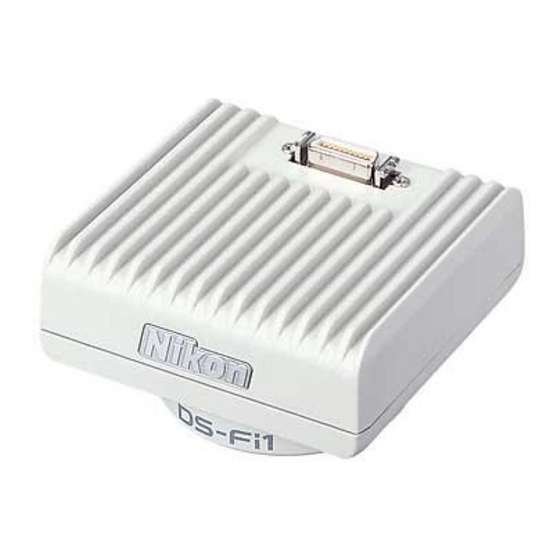Nikon DS-5M Manual de instrucciones - Página 20
Navegue en línea o descargue pdf Manual de instrucciones para Accesorios para cámaras Nikon DS-5M. Nikon DS-5M 47 páginas. Ds camera control unit, ds camera head, ds cooled camera head
También para Nikon DS-5M: Manual de instrucciones (49 páginas), Referencia rápida (15 páginas)

(2) Adjusting the Field Diaphragm
Adjust the field diaphragm so that it circumscribes the viewfield. The field diaphragm has a
significant impact on contrast, especially for fluorescent specimens against dark backgrounds.
Make sure you adjust the field diaphragm correctly. For details on adjustment, refer to your
microscope's instruction manual.
(3) Adjusting the Aperture Diaphragm
When using diascopic illumination:
Generally, the numeric value of the condenser aperture diaphragm should be adjusted to
approximately 70% to 80% of the numerical aperture (N.A.) of the objective.
When using episcopic illumination:
Generally, the aperture diaphragm should be adjusted to approximately 70% to 80% of
the size of the pupil of the objective that can be seen by removing the eyepiece and
looking into the eyepiece tube.
Supplement
*
For details on adjusting the aperture diaphragm, refer to your microscope's
instruction manual.
*
For photographed images that have greater depth of focus, close down the
aperture diaphragm. Note that closing down the aperture may limit the
performance of the objective.
Terms
What is depth of focus?
"Depth of focus" refers to the range along the axis of the field of view over which the
image is in apparent focus. Although reducing the aperture diaphragm extends the depth
of focus, doing so will also reduce resolution. Take this into consideration and adjust the
aperture diaphragm in accordance with your needs.
(4) Adjusting the Focus
Adjust the focus of the microscope so that the image can be clearly seen on the display.
(5) Adjusting the Lamp Voltage
When photographing a color image, the color reproducibility of the image depends on the lamp
voltage. When a halogen lamp is used as the light source, increasing the lamp voltage produces
a bluish light, while decreasing the lamp voltage produces a reddish light. Except in cases where
it is specifically necessary to adjust the tone, the voltage should be set to the proper level for
microphotography, which depends on the microscope being used. (Since this level varies for
each type of microscope, refer to your microscope's instruction manual.)
If the lamp voltage changes, measure the white balance once again.
Chapter 5
Microscope Adjustment
- 13 -
5
